
Beta testing is a critical step in the process of developing mobile apps.
The sooner you get your app into the hands of real users, the faster you’ll find and fix bugs and errors and deliver a polished, well-tested app that users will love.
However, finding good beta testers might be a little trickier than you’d expect, especially if you’re not sure where to look.
That’s why, in this article, we’re going to lay out some of the best places to find stellar beta testers, as well as tips on how to recruit them.
Stay tuned!
Table of Contents
Targeting existing users
If you’re looking for a quick and easy way to find beta testers, your existing user base is always a good start.
Your users are already familiar with your app so if something goes wrong or is out of the ordinary, they’ll be the first to notice.
There is also a psychological element here, and Elen Veenpere of Canny makes an interesting point about this.
Your existing users are more invested in improving it. They use your product or service for their own benefit, and therefore genuinely want it to be better.
In other words, they have an emotional connection with the app and want to see it succeed.
However, not all users are created equal and you can’t just send out invitations to everyone—you have to pick those who’ll have the most useful feedback for what you’re testing.

Get unreal data to fix real issues in your app & web.
For example, if you’re testing a new feature that’s only available to users who have paid for the app, then it probably won’t be very effective to invite the ones who signed up just for the trial version.
Furthermore, among your target audience, there are probably those who use the app more frequently and others who aren’t as involved.
As you can see in the picture below, some users might not have used the app for years.
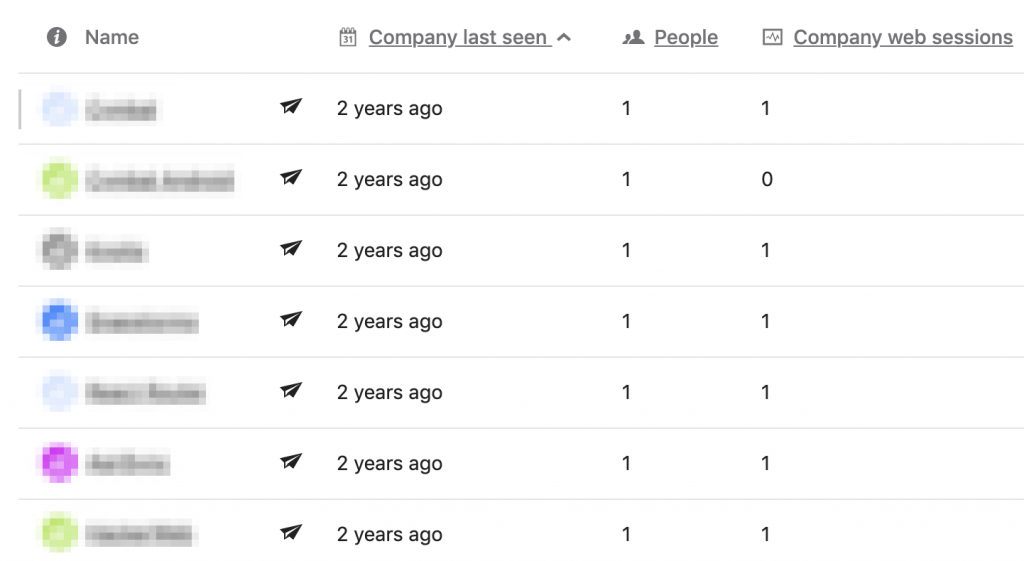
The first, active group of users will be more likely to notice chances for improvement and give you constructive feedback, while the latter might not be able to provide you with such good insights.
So when you’re deciding who to invite for testing, make sure that they’re representative of the app’s target audience as well as those who use it frequently.
The next thing to consider is how to reach out to your potential beta testers.
You have several options here, but the most convenient is probably email because it’s relatively easy to segment the users based on different criteria.
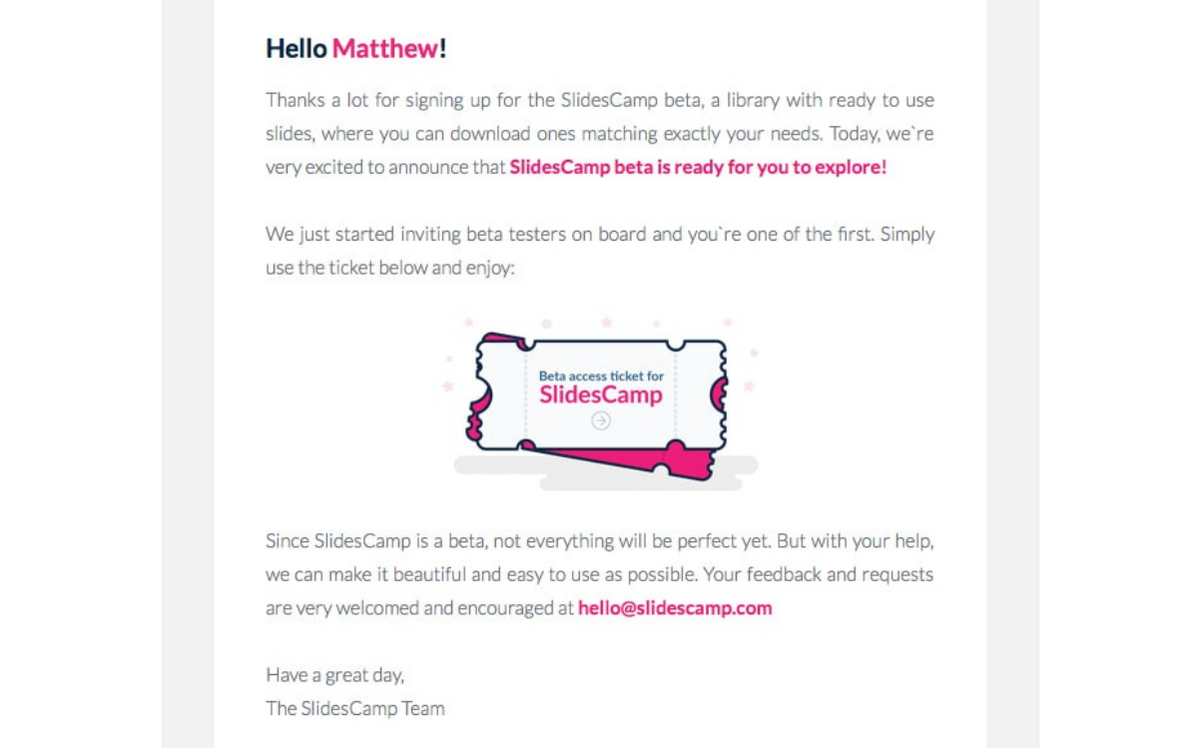
Make sure that your email doesn’t look like spam, though.
It should be short and sweet, as in the example above, with a clear call to action that tells users exactly what they need to do to sign up for beta testing.
There are a few other ways to invite existing users to become beta testers, and one of the most effective ones is an in-app survey.
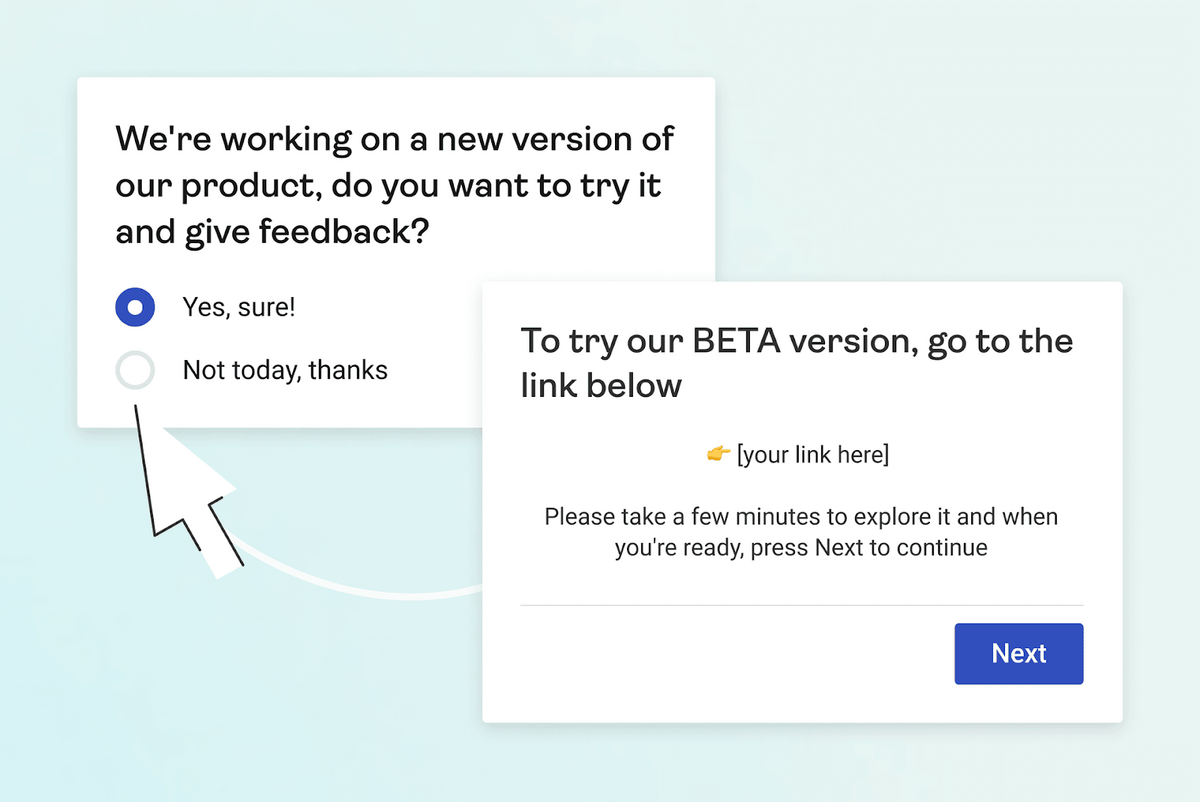
This approach can yield great results because users are already using the app when they receive an invite and may be more willing to participate in the beta testing.
As you can see, the existing user base can be a goldmine for sourcing quality beta testers.
It can give you a pretty solid head-start on your beta testing efforts and a stable pool of testers to work with.
Recruiting through your website
Many of the people visiting your app’s website may also be interested in testing it and trying out its new features.
If you look at the results of Centercode’s survey, you’ll notice that a few things stand out.
People participate in beta testing initiatives primarily to gain early access to products, learn about new features, and help improve the products they already use.
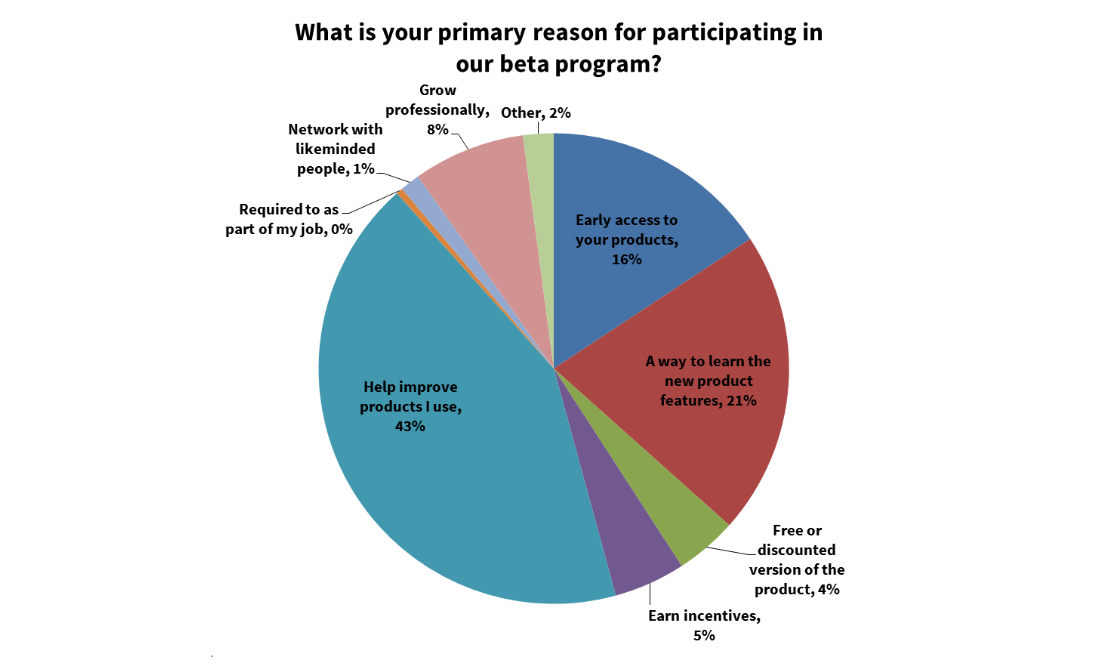
Website visitors are already interested in what you have to offer or else they wouldn’t be visiting your page.
Therefore, if we translate the results of the survey to website visitors, chances are that a significant portion of them would be willing to help you with beta testing in exchange for these benefits.
Looking from this perspective, it makes sense to start recruiting from here, especially if you have a steady stream of visitors coming in already.
By providing information about what’s involved in becoming a beta tester and including calls to action on your website, you can make it easy for these visitors to sign up.
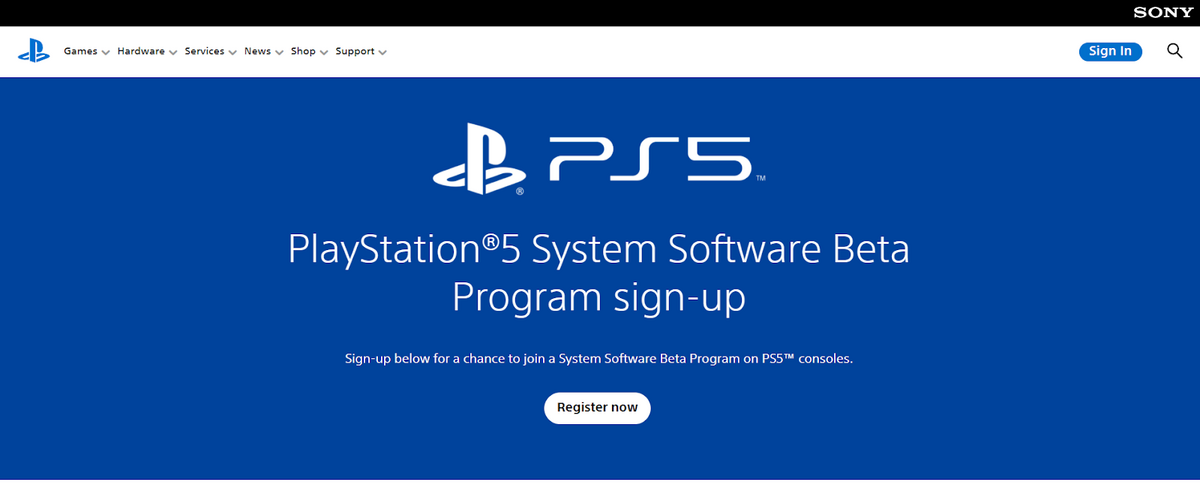
You can also create a landing page dedicated entirely to explaining what being a beta tester entails, which will ensure that prospective beta testers are well-informed on what they’re signing up for.
This will help you avoid any misunderstandings, as well as reduce the number of dropouts during the process.
For example, Snapchat’s landing page for iOS beta testing is clearly laid out and includes a description of what it means to be a beta tester, as well as instructions for signing up.
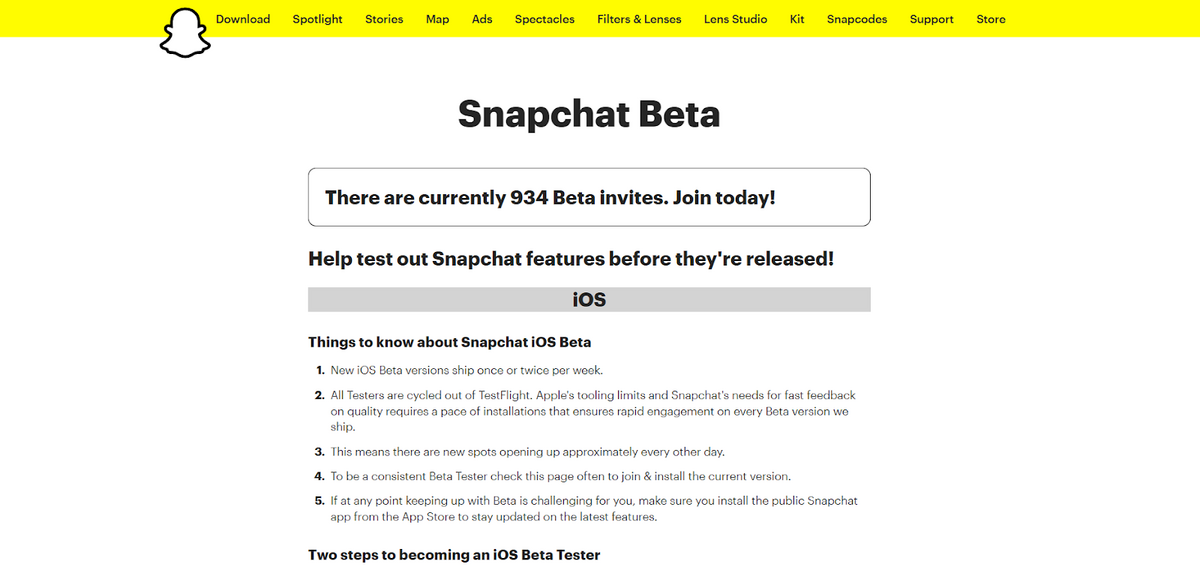
This way, prospective beta testers can clearly see what they can expect from the program.
To get even better results, you’ll maybe need to provide value in return for testers’ time and attention.
You can offer a variety of incentives, including early access or discount codes for your app, but Amazon gift cards and company swag are also effective at attracting beta testers, as you can see in the tweet below.

Either way, if you offer something in return for their testing efforts, you’ll find that more people will be willing to sign up as beta testers.
Recruiting website visitors to become beta testers can be a sure-proof way to get quality feedback about your app.
They can provide you with critical information about the app’s usability, but also with a sizable audience of early adopters who will be eager to try it out when it goes live.
Using social media
Thanks to social media and various online forums, it’s easier than ever before to find beta testers.
People who are already following you on social media or are active in online forum groups that your target audience frequents are more likely to check out your app.
For example, Reddit’s vast community makes it a potentially great place to recruit beta testers as users gather around specific topics that might be relevant to your app’s niche.
Besides that, there are also subreddits dedicated exclusively to testing new apps, such as:
These subreddits can be a good place to get feedback from experienced app testers who might be interested in giving yours a go.
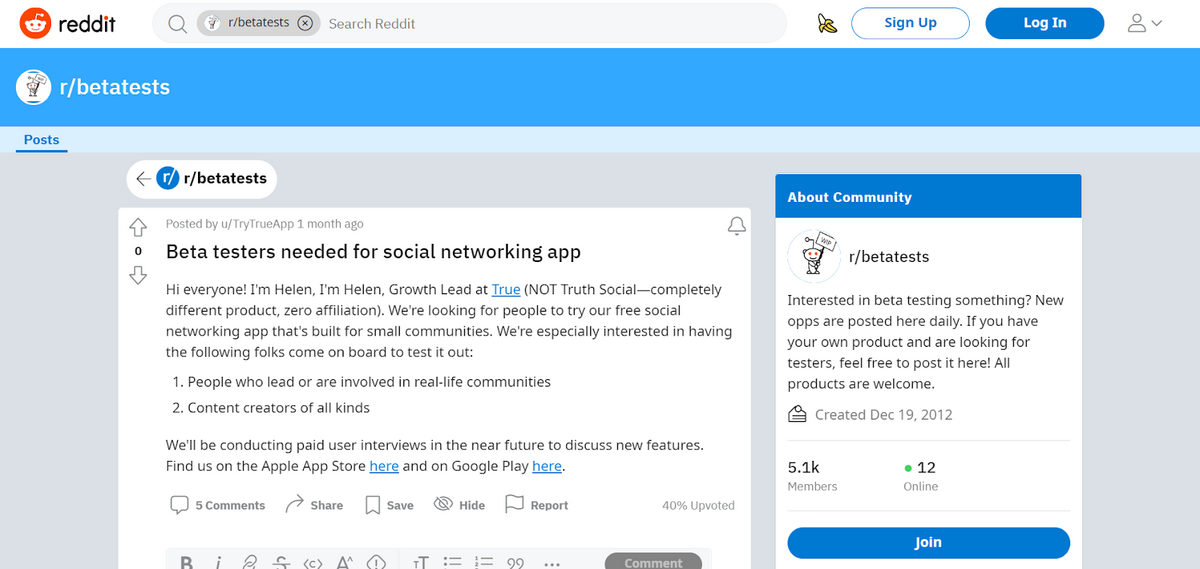
Quora is another example of a place where you might find quality testers.
The community there consists of people who are interested in a certain topic and want to learn more about it.
Because the users in your chosen corner of Quora are already interested in the issue your app is trying to address, they may be more likely to help you if asked for feedback.
For instance, Sergey Zuev, the founder of GA Connector, offers us great advice on how to use Quora as a tool to find beta testers.
The idea is simple: just use their search to find people who are asking questions related to the problem that your product solves. Then, after giving a thoughtful answer, invite them to your beta program.
Of course, you can find beta testers in other places besides Reddit and Quora. Facebook, Twitter, and Instagram are all excellent channels that you can use.
All you need to do is create a post where you ask your followers to sign up for beta testing and then follow up with those who show interest.
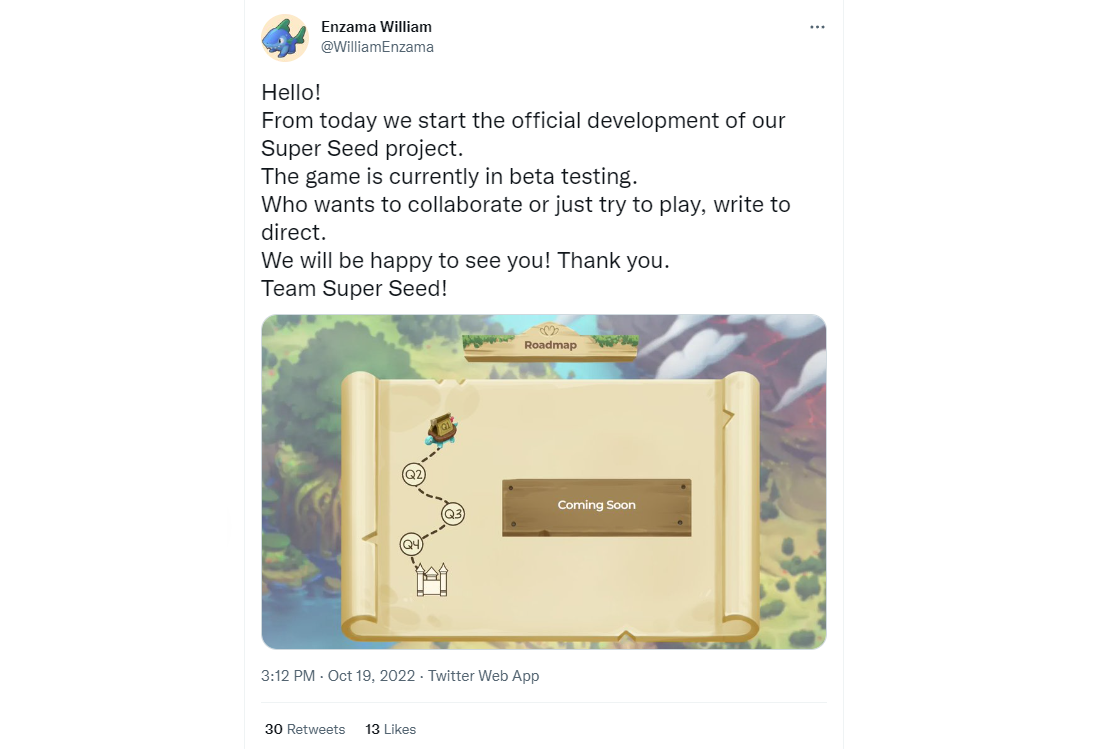
You can also draw on the vast resources of Facebook groups, which cover almost every imaginable topic under the sun.
You’ll probably find beta testers among their members—as Tomer Aharon, co-founder of Poptin, suggests.

The bottom line is that social media can be a treasure trove for finding beta testers.
If you’re just getting started with your beta program and don’t have many people on your list, it’s a great place to start.
You can use social media as a tool for research, recruitment, and even as an additional channel of communication with your target audience.
Running an advertising campaign
Although all three previously mentioned methods can bring you an interesting pool of candidates, if you want to ramp up your beta testing initiatives, running an advertising campaign could provide the boost that you need.
This will open your app up to entirely new potential candidates, which may include people who would otherwise never have heard about it.
For example, you can create ads on Facebook, Twitter, LinkedIn, or any other social media platform that you use and then target your ideal candidates.
Here is what an ad like this might look like.
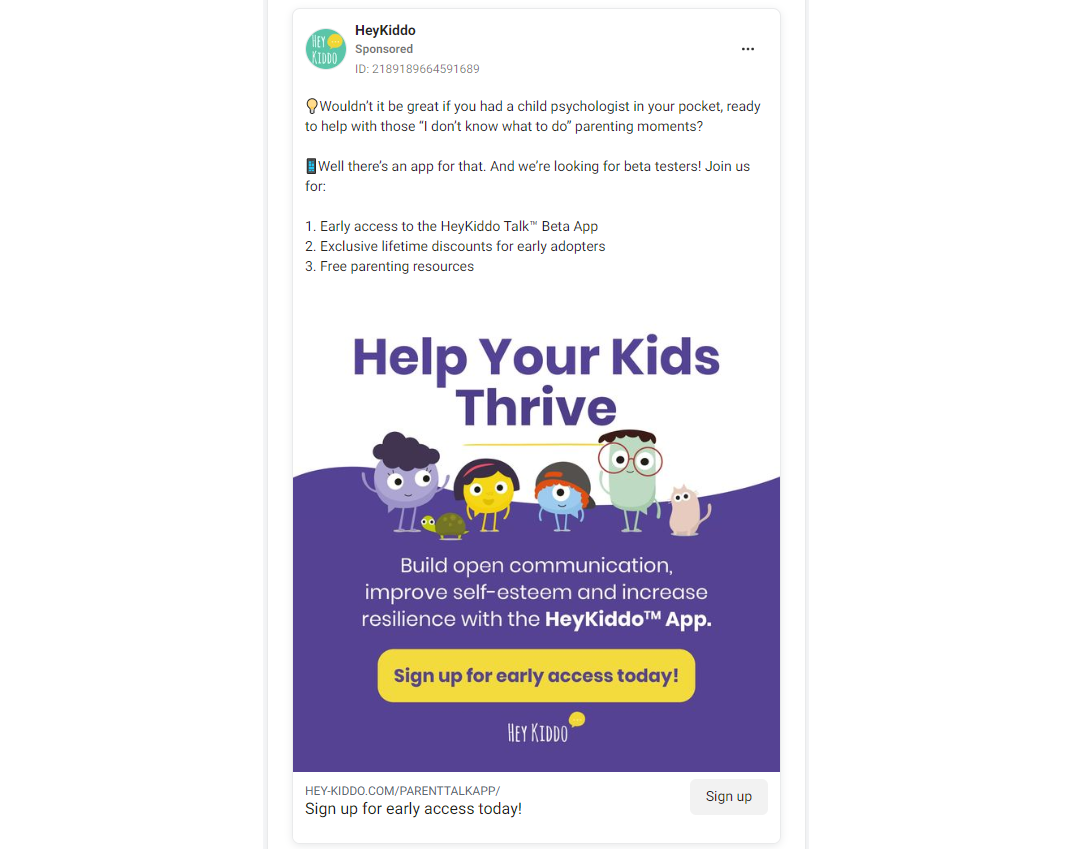
The best part of this type of targeted advertising is that it allows you to reach people based on their demographics, interests, and location.
The only downside to this is that it may be more expensive than the three previous methods from our list.
In addition to this, you can also use Google AdWords to run a campaign and drive traffic to your landing page, where potential candidates can sign up for testing.
This is a great way to get more people to your website and let them know that you are looking for beta testers.
That’s exactly what Sergey Zuev, who we already mentioned earlier, suggests because he has seen great results with this approach.
I created a landing page describing the problem and the future solution, then bought some traffic from AdWords for a few hundred dollars. People who were already searching for the problem didn’t require too much convincing, which saved a lot of time in the beginning.
You can also post ads on job boards, forums, and social media sites that are related to your industry or niche.
For instance, if your app is for people who want to learn how to code, then you could post an ad on a forum for developers, such as Stack Overflow or freeCodeCamp.
All in all, through paid advertising campaigns, you can get a lot of diverse beta testers in a short period of time.
The best part is that you can easily track how many people click on your ad, how much traffic it brings, and what percentage of those people are converting into testers.
This gives you control over the advertising campaign and lets you optimize it to get the best results.
Using beta testing sites
While you can find valuable beta testers on your own, there are also websites designed specifically for this purpose.
If you don’t have time to do all of the legwork yourself, sites like BetaTesting, BetaList, and Product Hunt are especially useful for sourcing trustworthy testers.
For example, BetaTesting is a website that provides a directory of more than 35,000 users who are willing to test products.
You can filter your potential testers by location, gender, age group, education level, and prior tech experience before reaching out to them, which can make the whole process easier.
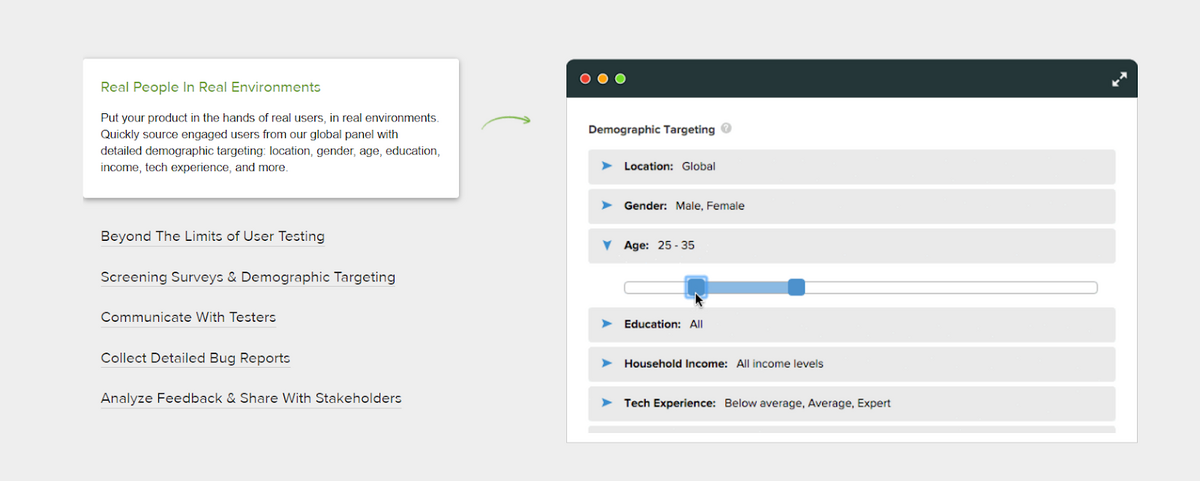
BetaList, on the other hand, is a website that allows you to post a tester call for any app that you’re developing.
Once you create an account and submit your app, users can then view it and sign up if they’re interested in becoming beta testers.
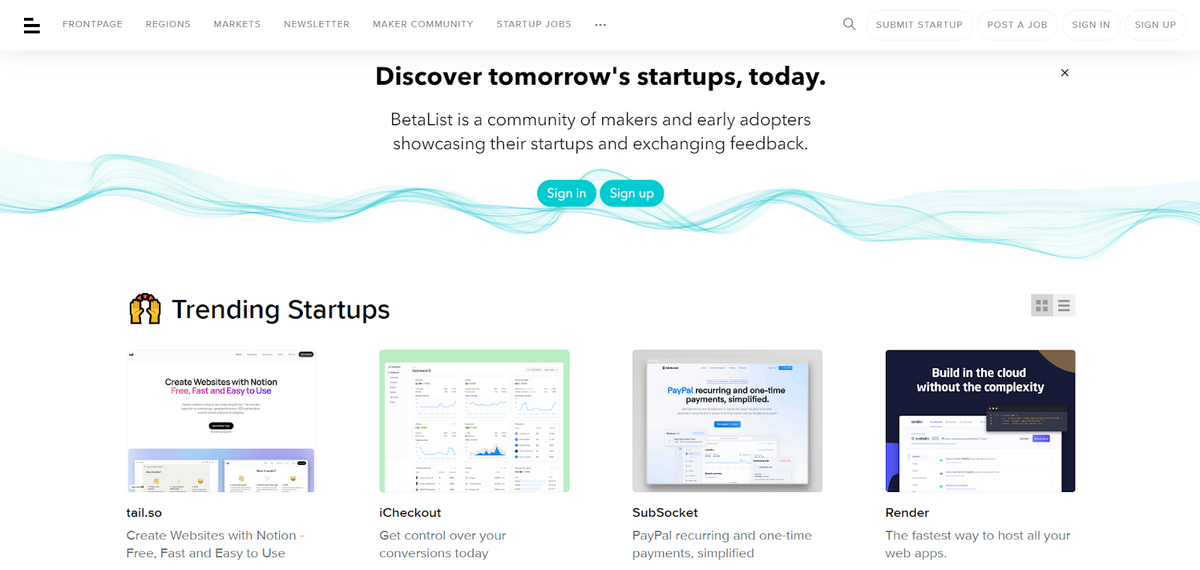
Many companies and startups have seen great results from using BetaList, including Upvoty, who managed to get 63 beta testers after 5 days.
In addition to a spike in beta testers, the company experienced significant increases in website visitors and followers on Instagram and Twitter, which is a bonus if you’re releasing the app for the first time.
And then there’s Product Hunt.
As a platform for tech enthusiasts to discover new products, it’s the place where you can find out about apps before most people hear about them anywhere else.
But what interests us here is that it has a community section where you can submit the app for review by other members of the site.
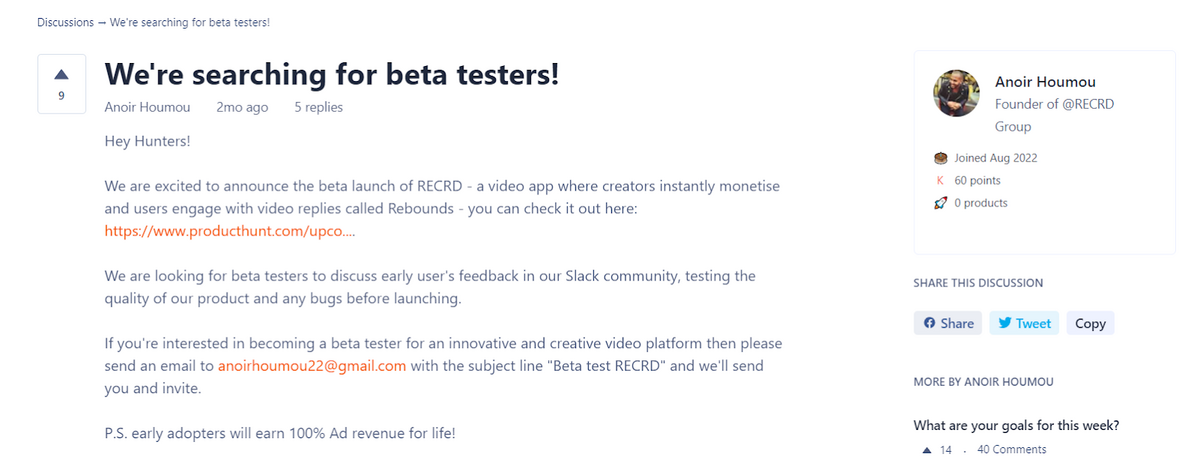
This way, you can get a lot of feedback from experienced app users, developers, and other tech-savvy people and thus improve your app before it hits the market.
Victor Ekelund, the CEO and founder of Albacross, agrees with this and says that submitting your app to ProductHunt is one of the best methods to get beta testers who are eager and willing to give you feedback.
Product Hunt turned out to be the ideal place to search for such beta testers. This platform is full of those who are passionate about new technologies, who are wise and ready to help.
All of the sites we’ve mentioned here can provide you with a large pool of beta testers who are experienced and knowledgeable about testing applications.
This can be a great asset when you don’t have the time or resources to find beta testers yourself.
Conclusion
Once you have created a winning team of beta testers, it would be wise to continue to develop these relationships.
There’s no reason to let your beta testers go after the testing period is over.
Keep in touch with them, and ask for their input on new features or app releases.
This will make future testing easier, faster, and cheaper—and ensure that you have a loyal core of testers who can be counted on.





